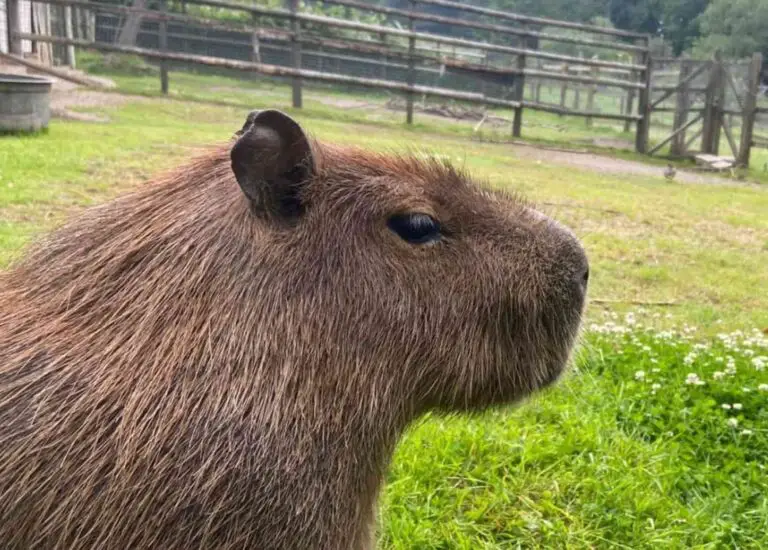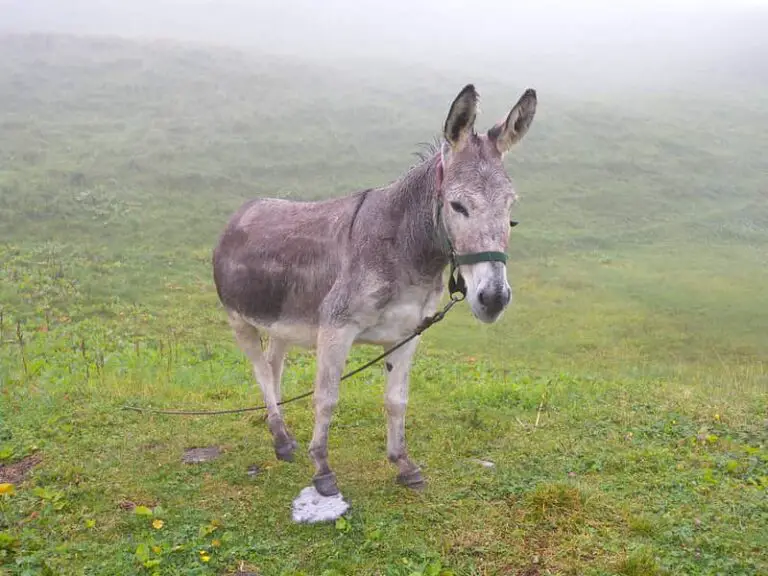Can Goats Feel Their Horns?

To understand whether goats can feel their horns, it is first necessary to understand that a goat’s horns are part of its permanent bone structure, and therefore it is as if it were an extension of its own inner body to the outside.
The horn of the goat is hollow, and this hollow shape is due to the fact that through the horn pass important blood vessels that nourish the bone throughout its life, as well as nevi inside it, which is why it is totally evident that goats can feel their horns.
Do goats feel pain in their horns?
It may seem that goats do not feel pain in their horns, but to the naked eye, goat horns simply look like hollow structures without any internal connection to the animal.
But that is not the case, even though the horns are an external projection, they are like part of the bone structure of the goats, with nerves and blood, it is obvious that they feel pain.
Although the horns are extremely resistant and the goats use them in their confrontations by bumping them against each other, the reality is that on the outside they are quite hard but inside the nerve endings that connect them to the goat’s body are extremely sensitive.
The horns of goats absorb impacts very well during these confrontations between them, but the goats’ skulls are relatively weak, especially early in their lives.
Pain is an individual sensation, it is very difficult to explain with words, even for us humans with excellent communication and expressing skills, for an animal that cannot express what it feels the only sign of pain is screaming.
I have seen how goats scream when their horns are removed, you can almost feel the pain through their scream, although in reality animals process pain differently than humans, or at least I have that perception.
What I mean by this is, an animal could be feeling chronic pain and not show it 100% with its expressions, this is something that has to do perhaps with its nature.
The process of goat dehorning
If what I have written here is not enough for you and you have doubts if goats can feel their horns, just watch videos of the dehorning process in goats.
This practice is common in goats with the intention that when they grow up they are not mistreated with their horns, goats are prone to clashes with their horns, especially in females the dehorning is done to avoid injury to the udder or any other part of the body.
The thing is, I was able to see some videos of how this procedure is done, and it seemed to me something really cruel and very hard to see, it reminded me of a movie I saw a few years ago of a man whose arm was trapped in a giant rock and he had to cut the arm, nerves and bone with a small knife.
I know I am exaggerating a little in reference to the movie, not that I am that sensitive, but it really is something uncomfortable to see, and it is undoubtedly that the animal is suffering and feeling pain.
How useful are goat horns?
It is true that horns could represent a problem in many occasions, because of constant fights, but horns are very useful for goats for several reasons.
It is their only defensive mechanism, in case of danger, they serve to scare away enemies and to face them. During the courtship season, they are also an important ornament to attract mates.
In some countries the horns of goats also have a very important medicinal use, I even saw crafts made of goat horn, but this is already exotic extravagances.
Keeping goats with horns
Goats appreciate social contacts, but they also use a ranking system to know who is in charge or leads the group. When food or any other resource is scarce, there will be trouble. They like to juggle, measure their strength and test relationships with each other.
The ideal in natural goat husbandry is to let the goats have their horns and thus their character. The Animal Welfare Act only allows dehorning goats in individual cases with veterinary indication and only with anesthesia and pain relief.
Dehorning is associated with high stress and risk for the animal. Because, unlike cattle, fawns have a relatively large horn system and a very thin skull.
On the other hand, the breeding of horned goats is not without its problems. There is a high risk of injury to humans and animals. Not even adequate barn structuring and spacious barn room design can entirely prevent any fighting with horns.
Reducing fights between horned goats
There are different approaches to minimize rank fights, stress, and aggression in the playpen. Feeding fences, for example, are unfavorable where the goats have to laboriously thread their horns out.
Continuous neck bars, where an animal can stir up the whole row at the feeding table, are also less suitable. Palisade bars that allow a view to the rear are better. Narrow aisles or dead ends, in which the goats cannot avoid each other, should be avoided.
A sufficient number of reclining niches, feeding places and drinking troughs reduce the competition between the animals. Dairy goats need large amounts of high-quality feed, especially during high lactation.
Sufficient space at the feeding table is just as necessary as a constant supply of high quality basic forage and frequent feed. Real ad libitum feeding is only possible if there is always at least ten percent leftover feed on the feeding table.
Additional hay racks also reduce competition at the feeding place. Visors on the feed fence above the feed bring more peace and quiet when eating.
The lying area must be sufficiently large, at least 1.5 square meters per animal is recommended. Raised boards also expand the space available and reduce the aggression between the animals.
Partition walls or different levels provide privacy so that lower-ranking animals can withdraw from higher-ranking animals. Goats prefer to rest and stand on elevated surfaces and like to climb. In addition, structure allows goats to get out of the way better.







